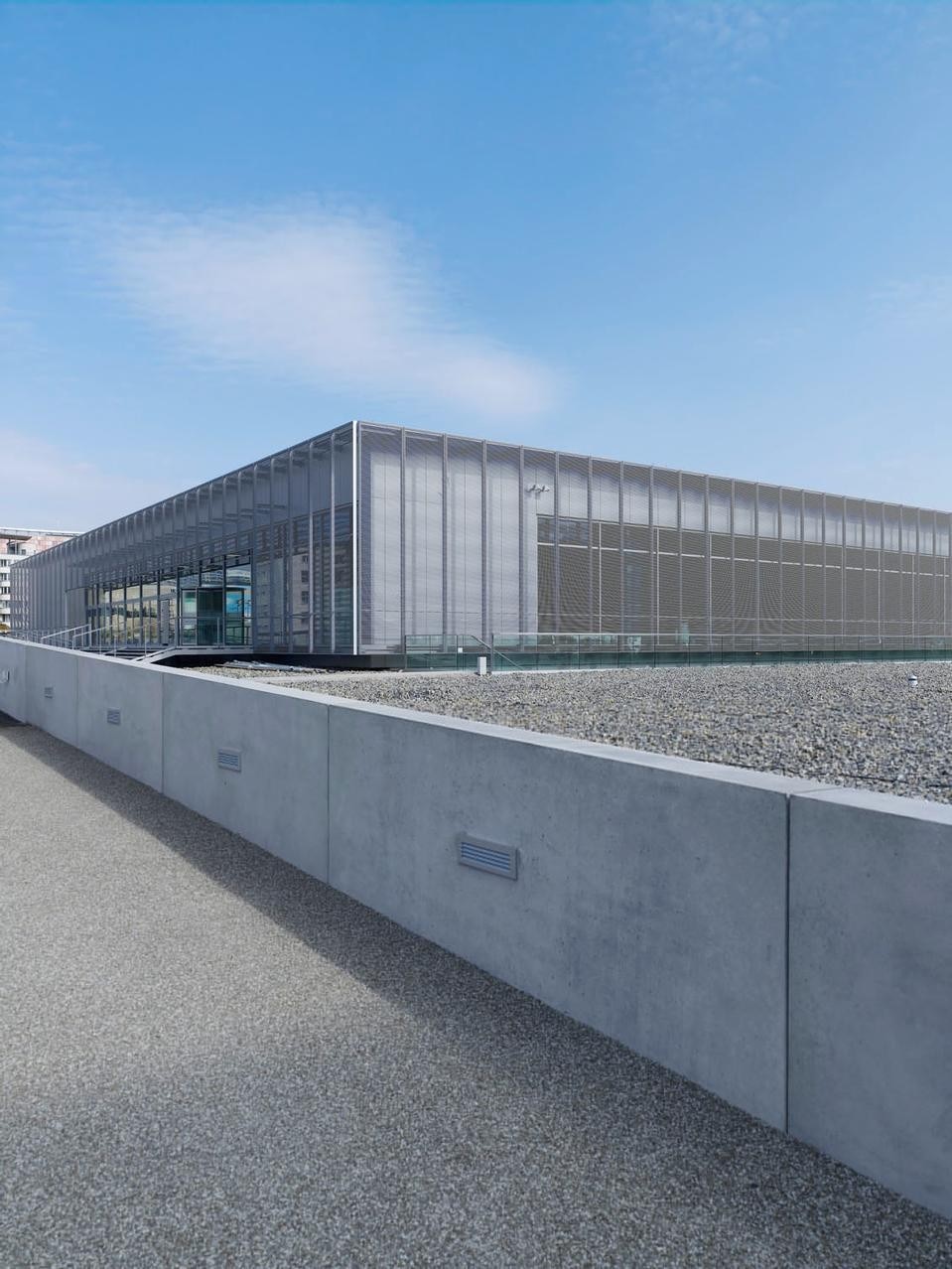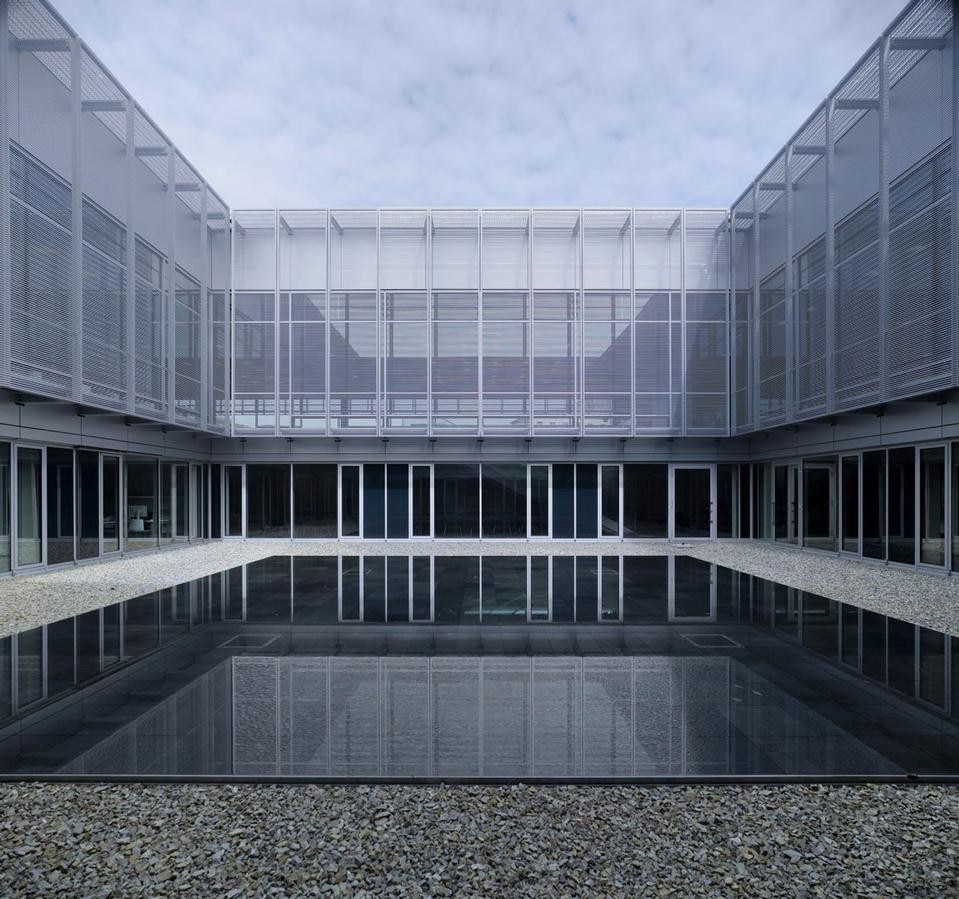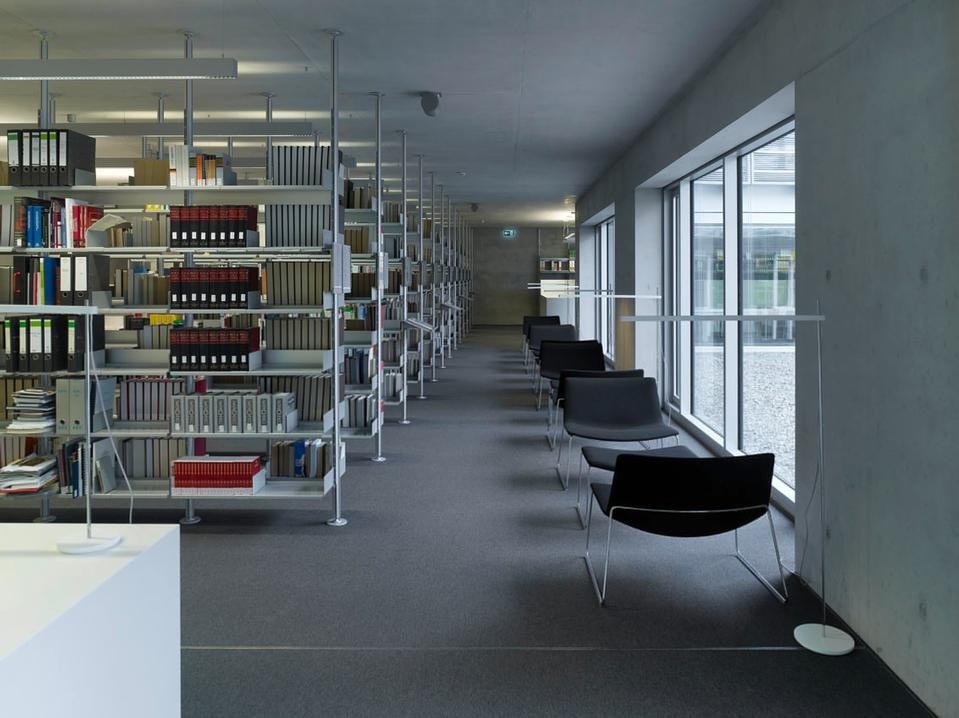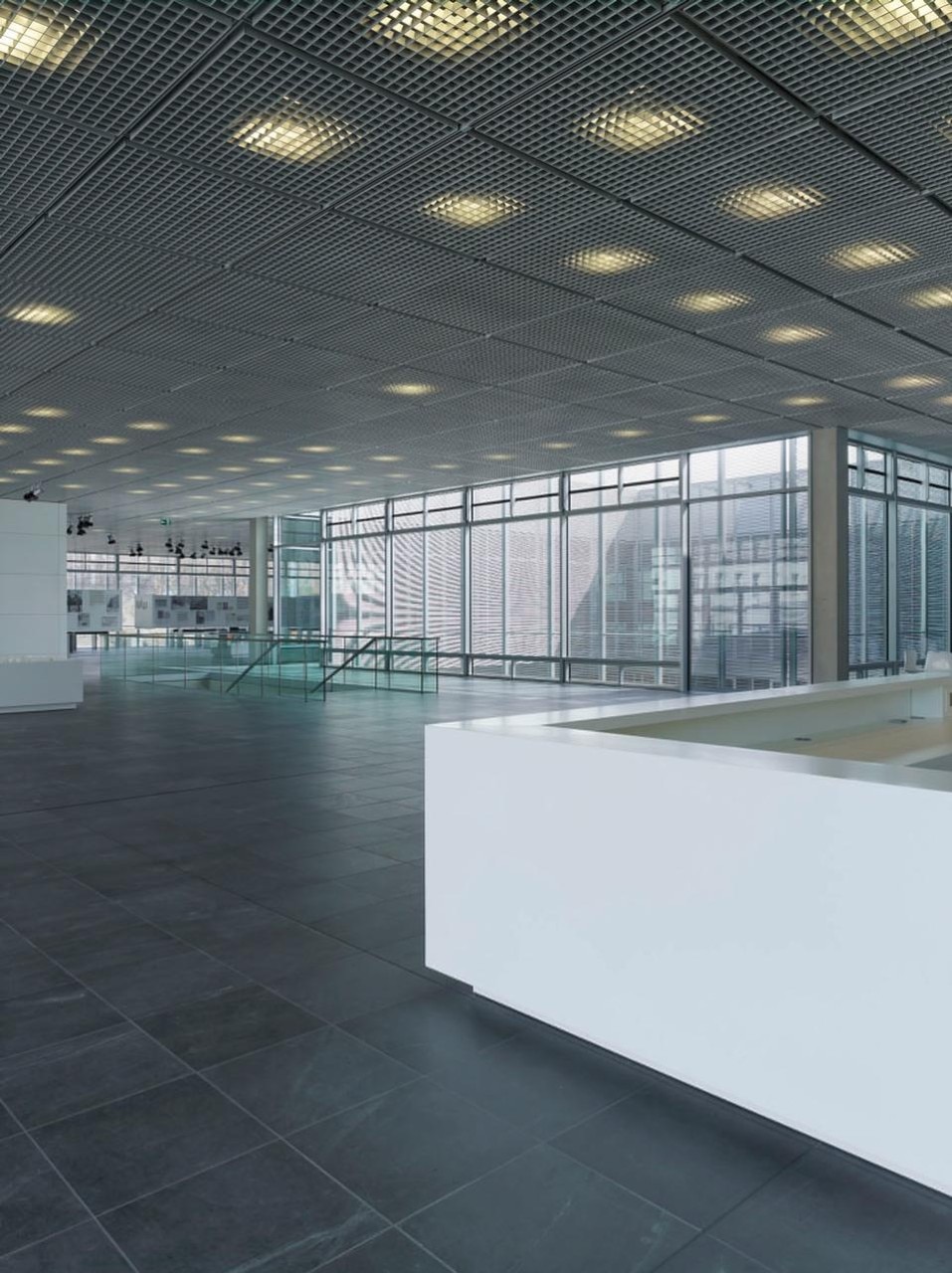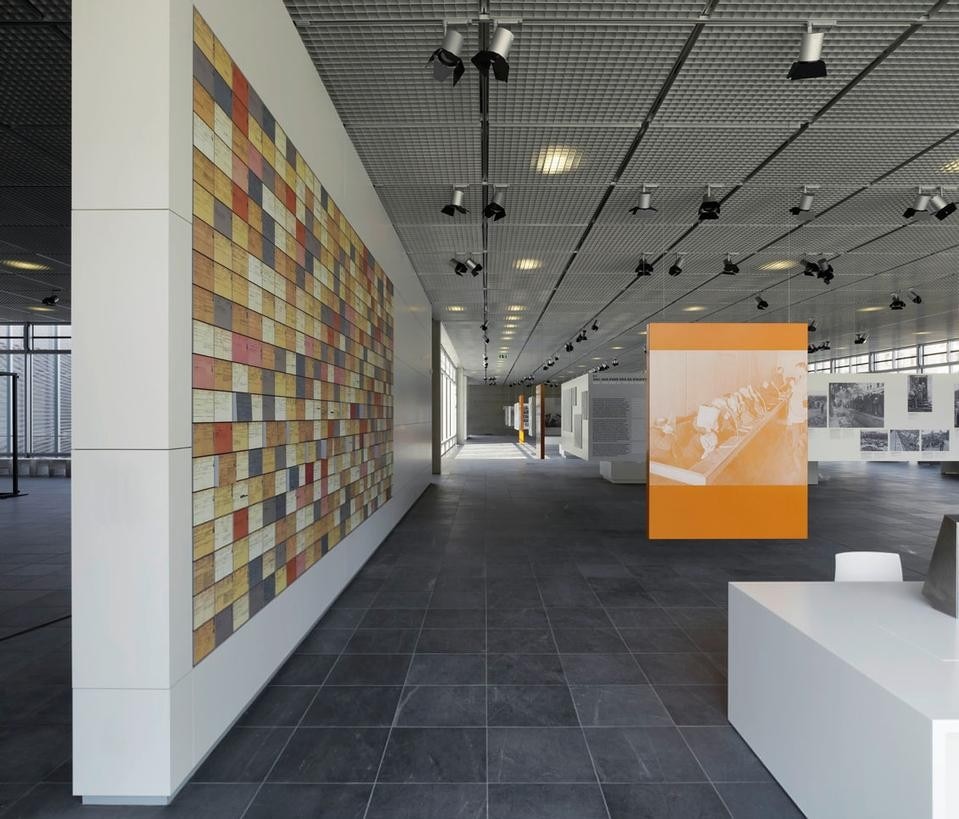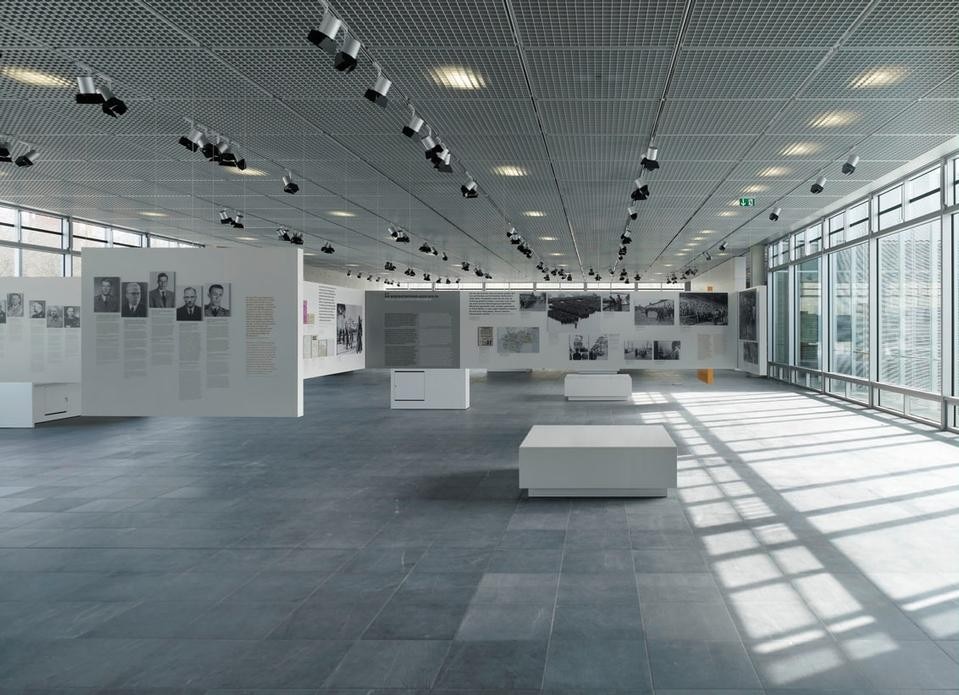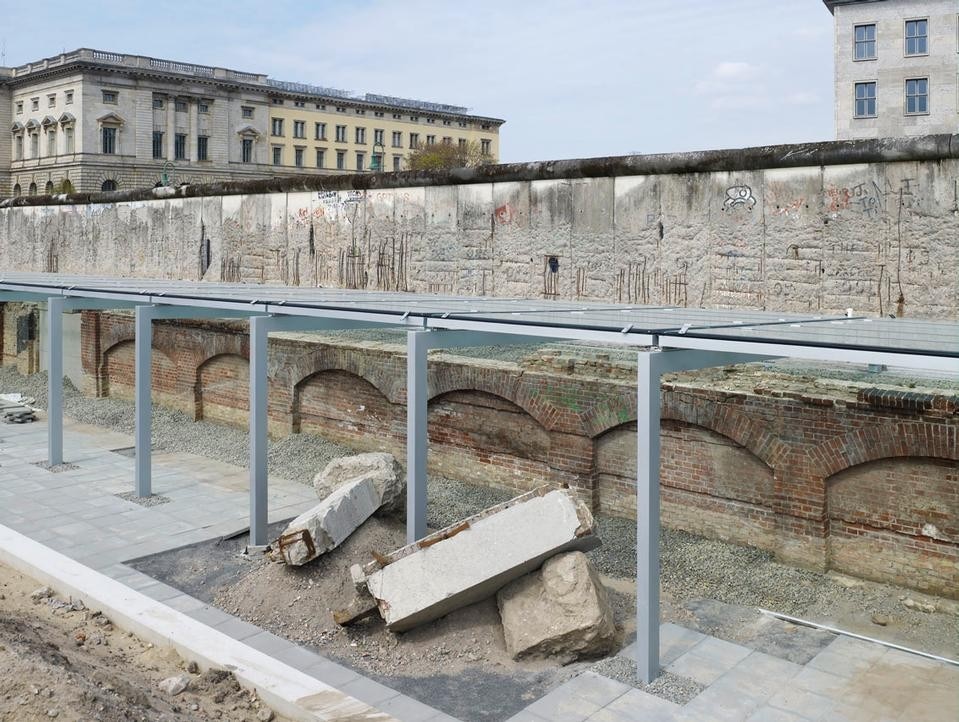The competition won by Swiss architect Peter Zumthor in 1996 to build a museum to the history of the Third Reich on this site ended acrimoniously when, after the foundations and basement had been completed, the government called for its demolition. The project ran out of money and the political will to build it had moved on. Instead a make-shift outdoor exhibition detailing the history of the site remained next to the former Berlin Wall which also ran through it. Fourteen years later, a still grey metal box designed by Ursula Wilms (Heinle, Wischer & Partners) with landscape architect Heinz W. Hallmann (Aachen) offers a quiet shelter for the exhibition centre.
Wilms' architecture offers little in the way of symbolism. After all, the language of the memorial has been explored, but what is appropriate to recognise the perpetrators, rather than the victims of terror? The metal mesh skin of the centre shrinks tightly to the sides of its rigid walls. The mesh allowing a degree of lightness and softness to its frame. Although its perimeter is flanked by low concrete walls it stands amid a dusty unkept landscape overgrown with shrubs and trees, deliberately left untended.
Inside the building is, as expected, something between functional and elegant. Dark floors and generous glass walls. The exhibition inside is an extensive documentation and history and there is a large public library. This building is no memorial and save a calm reflecting pool in the inner courtyard there are few aesthetic gestures, or even a public café, to give an opportunity for such an interpretation. Beatrice Galilee
